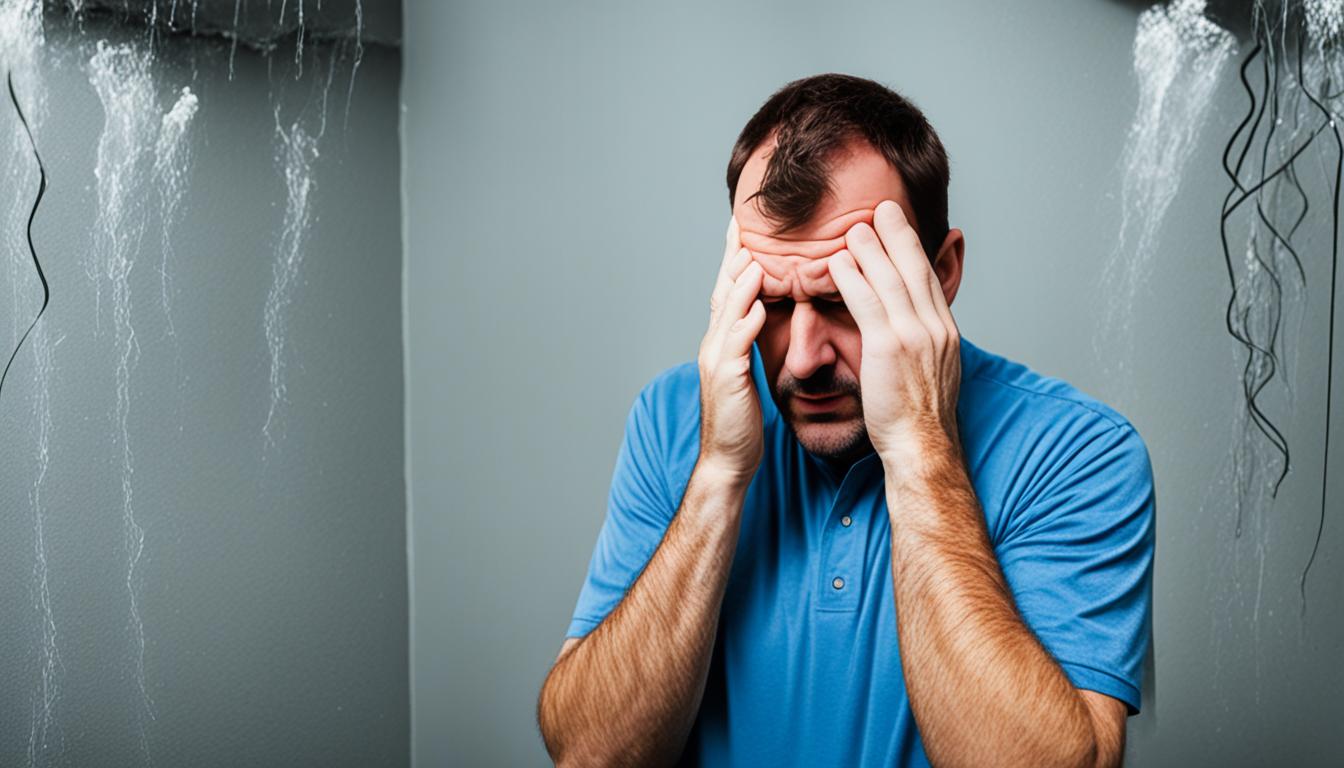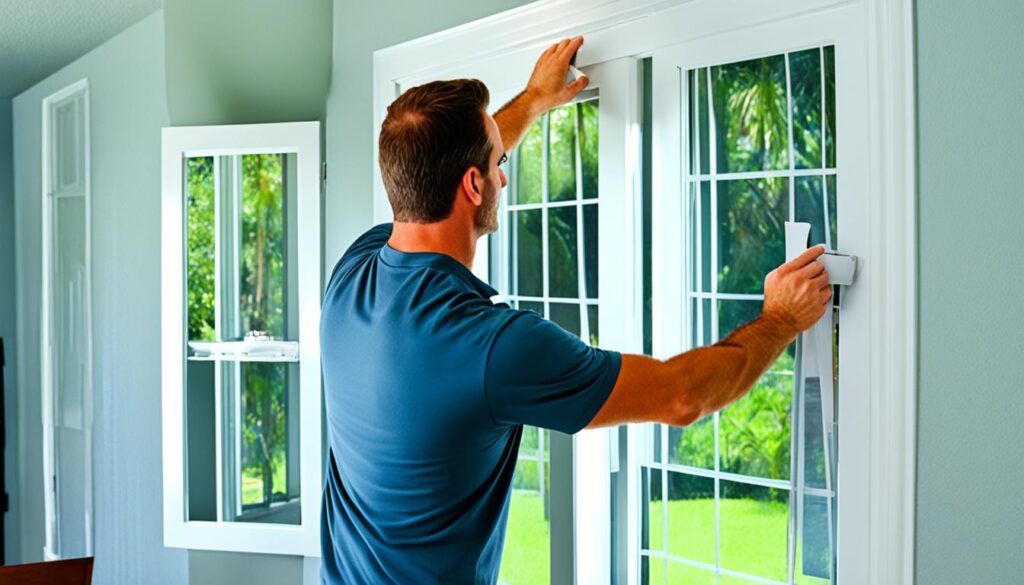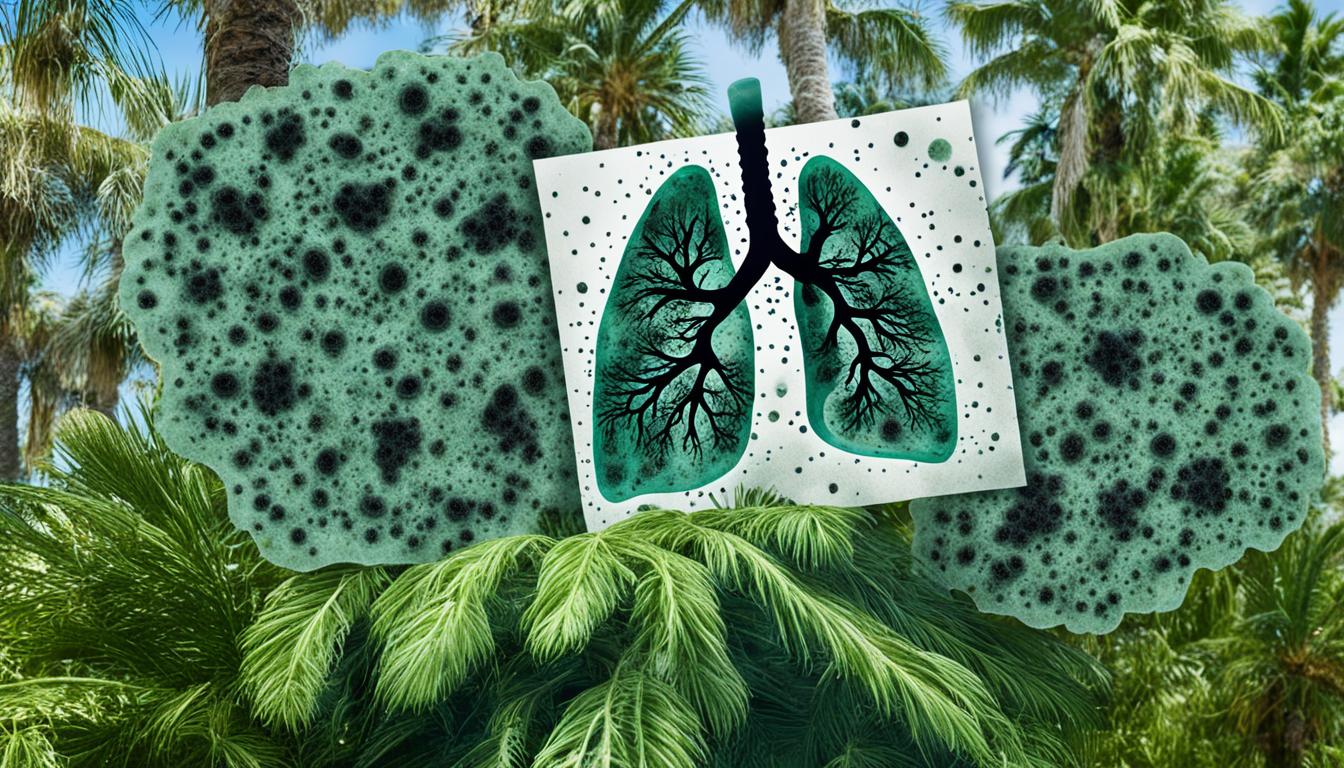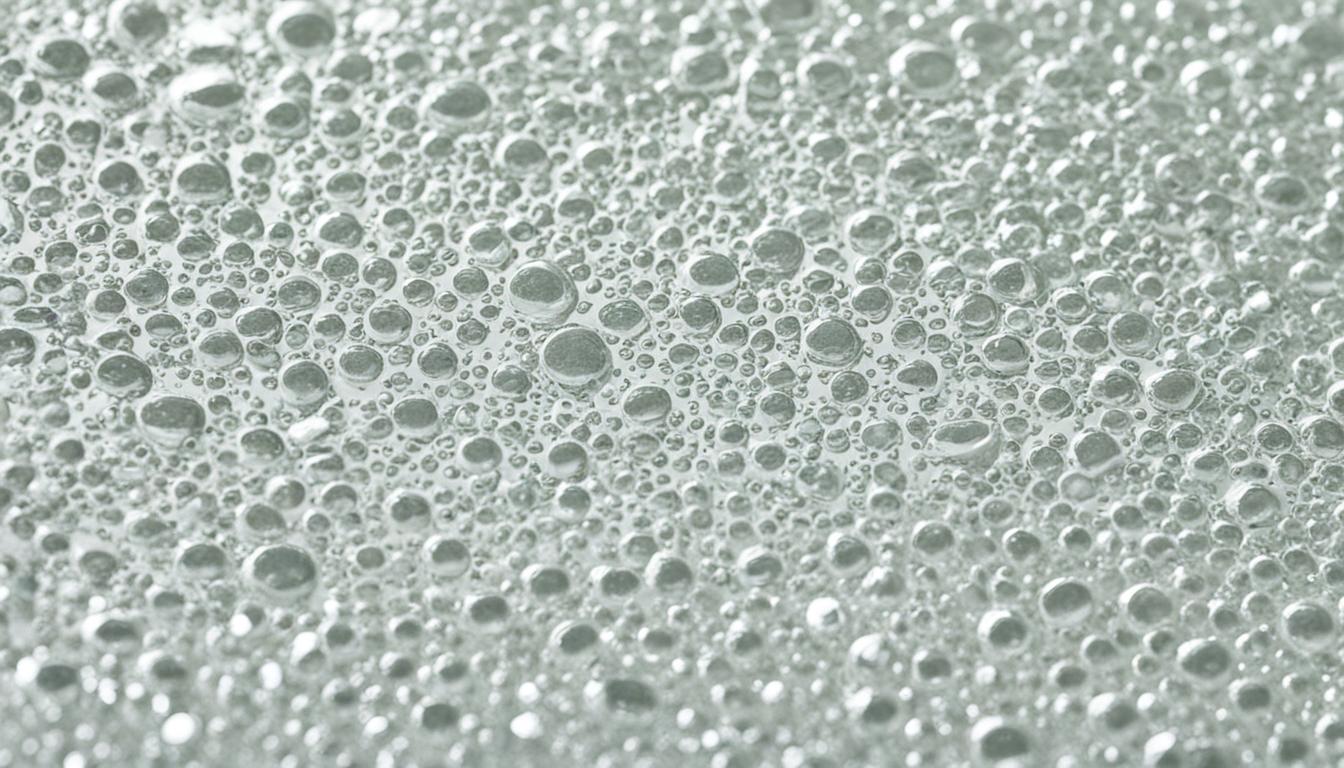
Recognizing Symptoms of Mold Exposure in Florida
In the warm and humid climate of Florida, mold can be a common issue that can impact your health. It’s important to be able to recognize the symptoms of mold exposure in order to protect yourself and your loved ones. By understanding what to look out for, you can take appropriate action to address any potential mold problems and maintain a healthy living environment.
Key Takeaways:
- Recognize the common symptoms of mold exposure in Florida.
- Take action to address mold issues promptly to protect your health.
- Understand that mold symptoms can vary from mild to severe.
- Stay proactive in preventing mold growth and spread in your home.
- Regular inspections and moisture control are essential in mold prevention.
Common Symptoms of Mold Exposure in Florida
When exposed to mold in Florida, individuals may experience a variety of common symptoms. It is crucial to be aware of these symptoms as they can range from mild to severe and may affect individuals differently. Recognizing these signs early on can help you take appropriate action to address any potential mold issues and safeguard your health.
Some of the most frequently observed symptoms of mold exposure in Florida include:
- Allergies: Mold can trigger allergic reactions, leading to symptoms such as sneezing, coughing, watery eyes, and a runny or stuffy nose.
- Respiratory Issues: Prolonged exposure to mold spores can cause or worsen respiratory problems, including asthma, bronchitis, and sinus infections.
- Skin Irritation: Mold exposure may result in skin symptoms like rashes, itching, and redness.
- Fatigue: Feeling excessively tired or experiencing a lack of energy can be a common symptom of mold exposure.
- Headaches: Mold exposure may trigger frequent headaches or migraines.
- Brain Fog: Some individuals may experience difficulty focusing, poor concentration, or memory problems as a result of mold exposure.
- Digestive Issues: Mold exposure can contribute to digestive symptoms like nausea, diarrhea, or abdominal discomfort.
If you suspect that you or someone in your household is experiencing symptoms related to mold exposure, it is essential to consult a healthcare professional for a proper diagnosis and to discuss appropriate treatment options.
By understanding and recognizing these common symptoms, you can take proactive measures to address any potential mold issues and protect your health in the humid climate of Florida.

Preventing Mold Exposure in Florida
Florida’s warm and humid climate creates an ideal environment for mold growth. To protect yourself and your family from the potential health risks associated with mold exposure, it’s essential to take proactive measures to prevent its growth and spread. By implementing the following strategies, you can create a healthier indoor environment and significantly reduce the risk of experiencing mold-related symptoms.
Proper Ventilation
Good airflow and ventilation are crucial in preventing mold growth. Ensure that your home has proper ventilation systems in place, such as exhaust fans in bathrooms and kitchens. These fans help to remove excess moisture and prevent condensation, which can contribute to mold development. Regularly clean and maintain these ventilation systems to ensure their effectiveness in reducing moisture levels.
Moisture Control
Moisture control is paramount in mold prevention. Keep moisture levels in your home low by fixing any leaks or water issues promptly. Inspect your roof, plumbing, and foundations for signs of leaks and repair them immediately. Avoid excessive humidity by using dehumidifiers in damp areas of your home, such as basements or crawl spaces. Additionally, ensure proper drainage around your home’s exterior to prevent water from seeping into the foundation and causing moisture issues indoors.
Regular Inspections
Regular inspections are essential for identifying and addressing any mold issues before they become more severe. Schedule routine inspections of your home, focusing on areas prone to moisture, such as bathrooms, kitchens, and basements. Look for signs of water damage, musty odors, or visible mold growth. If you suspect mold, consult a professional mold inspector who can conduct a thorough assessment and provide recommendations for remediation if needed.
“Taking proactive steps to prevent mold exposure is key to maintaining a healthy living environment in Florida. By implementing proper ventilation, moisture control, and regular inspections, you can minimize the risk of mold growth and protect your well-being.”
Remember, preventing mold exposure is crucial for your health and the well-being of your loved ones. By following these preventive measures, you can create a mold-free environment and enjoy a healthier life in the beautiful state of Florida.

Conclusion
In conclusion, recognizing the symptoms of mold exposure in Florida is of utmost importance. The warm and humid climate creates an ideal environment for mold growth, making it crucial to be able to identify the signs that indicate its presence. By being aware of common symptoms such as respiratory issues, allergies, and skin irritation, you can take prompt action to address any potential mold problems and protect your health.
Prevention is key when it comes to maintaining a mold-free environment in Florida. Implementing strategies such as proper ventilation, moisture control, and regular inspections can significantly reduce the risk of mold growth. It is essential to stay proactive in preventing mold, as it can lead to long-term health issues and damage to your property.
By following the guidelines discussed in this article, you can safeguard your health and well-being. Remember to stay vigilant in recognizing the symptoms of mold exposure, be proactive in preventing its growth, and take immediate action if you suspect a mold problem. With these measures in place, you can ensure a healthier and safer living environment in the Sunshine State.




